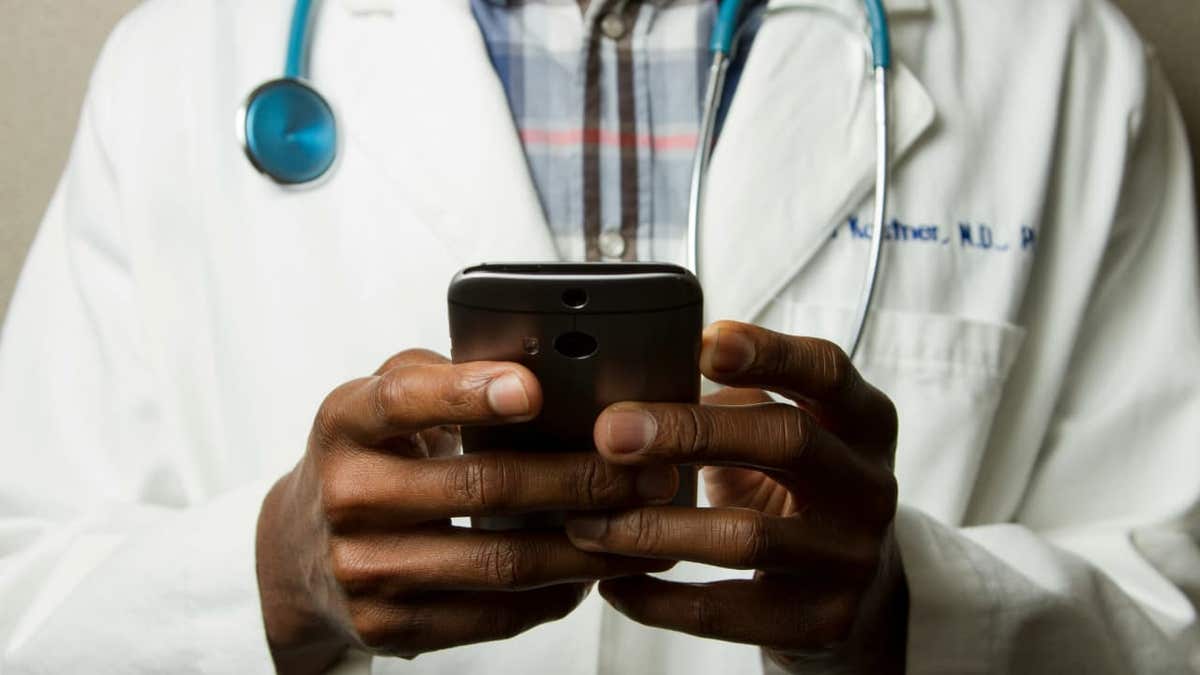NEW Fox News articles are now available for audio listening!
Over the last ten years, healthcare data has emerged as a prime target for cybercriminals. Various stakeholders, including insurers, hospitals, and clinics, manage sensitive information regularly.
However, significant data breaches are not always confined to hospitals or medical applications. An increasing number of healthcare organizations rely on third-party vendors for digital services like scheduling, billing, and marketing.
A recent incident involving a digital marketing agency that supports dental practices resulted in the exposure of approximately 2.7 million patient profiles alongside over 8.8 million appointment records.
Subscribe to my FREE CyberGuy Report
Receive my top tech advice, critical security alerts, and exclusive offers delivered to your inbox. Upon joining, you will also gain immediate access to my Ultimate Scam Survival Guide—absolutely free.

Illustration of a hacker at work (Kurt “CyberGuy” Knutsson)
Major healthcare data breach compromises millions of records
Cybernews researchers unearthed a misconfigured MongoDB database that laid bare 2.7 million patient profiles alongside 8.8 million appointment records. This database was publicly accessible without any password or authentication safeguards, making it vulnerable to anyone with basic database scanning tools.
The compromised data cache contained sensitive details such as names, birthdays, addresses, email addresses, phone numbers, genders, chart IDs, preferred languages, and billing classifications. The appointment records also encompassed crucial metadata, including timestamps and institutional identifiers.
ANOTHER MASSIVE DATA BREACH EXPOSES 184 MILLION PASSWORDS AND LOGIN CREDENTIALS
Evidence within the exposed data hints at Gargle, a Utah-based company specializing in web development and marketing for dental practices. While not officially confirmed, numerous internal references and system details strongly link Gargle to the exposure. Their services, including appointment booking, form submission, and patient communication, necessitate access to patient data, positioning them as a probable conduit for the breach.
Following the report of the breach, measures were taken to secure the database. Yet, the timeline for how long the data remained open and whether it was accessed or downloaded by malicious actors before being secured is still unclear.
Attempts to contact Gargle for comment yielded no response before press time.

A healthcare professional examining patient data (Kurt “CyberGuy” Knutsson)
Consequences of healthcare data breaches: identity theft and fraud risks
The compromised dataset represents a serious risk landscape. Individual items like a phone number or billing record may appear limited, but aggregated, they create a comprehensive profile susceptible to identity theft, insurance fraud, and targeted phishing schemes.
Medical identity theft allows criminals to pose as patients, accessing services under false identities. Victims typically remain oblivious until severe damage occurs, ranging from inaccuracies in medical records to outstanding bills in their names. Furthermore, such data breaches facilitate insurance fraud, with perpetrators leveraging institutional identifiers and chart data to submit fraudulent claims.
This breach raises urgent questions regarding compliance with the Health Insurance Portability and Accountability Act, which mandates strict security measures for organizations managing patient data. Although Gargle is not classified as a healthcare provider, its engagement with patient-facing systems could render it accountable as a business associate under this regulation.

A healthcare professional utilizing a laptop (Kurt “CyberGuy” Knutsson)
Strategies to mitigate risks from healthcare data breaches
For those affected by this healthcare breach or similar incidents, proactive measures are vital for protection.
Identity theft protection services are essential: Given that this breach revealed personal and financial information, it is imperative to be proactive in monitoring for identity theft. Such services provide ongoing surveillance of your credit reports, Social Security number, and even the dark web to identify misuse. They issue instant alerts for unusual activity, enabling quick action to prevent further damage. Many identity protection firms also offer dedicated recovery specialists who assist with fraud resolution, unauthorized charge disputes, and identity restoration.
Consider personal data removal services: The breadth of information leaked in this healthcare breach can proliferate into the public domain, increasing scam risks. Utilizing personal data removal services can facilitate the continuous monitoring and purging of your information from various online databases. Although no service can guarantee complete eradication of data from the internet, these services can systematically assist in retaining your privacy.
Implement strong antivirus software: With hackers armed with personal data, phishing schemes aiming to install malware become a significant threat. Robust antivirus protection across all devices offers a strategic defense against malicious emails, alerting users to potential scams before they inflict damage.
Enable two-factor authentication: Although passwords weren’t compromised in this breach, implementing two-factor authentication (2FA) enhances security for critical accounts. By requiring a secondary piece of information during login, such as a code sent to your phone, the approach significantly reduces the risk of unauthorized account access.
Remain cautious of physical mail communications: Cybercriminals may exploit your leaked address for targeted mail scams. Phishing attempts through traditional mail can often mimic trusted brands or individuals, utilizing urgent notifications about deliveries, account suspensions, or security alerts.
Kurt’s conclusion
This latest breach highlights ongoing issues regarding the management of patient data in today’s digital landscape. Increasingly, non-medical vendors garner access to sensitive data without facing similar regulatory frameworks as hospitals and clinics. These third-party services have become integral for patients engaging in routine processes like appointment scheduling and billing, yet when breaches occur, the repercussions are substantial. Even though the exposed database has been taken offline, the overarching concern persists: Your data’s security is only as robust as the least disciplined entity that accesses it.
Are healthcare organizations sufficiently investing in cybersecurity measures? Share your thoughts at Cyberguy.com/Contact.
For further tech updates and security alerts, subscribe to my free CyberGuy Report Newsletter at Cyberguy.com/Newsletter.
Ask Kurt any questions or suggest topics for future coverage
Follow Kurt on various social media platforms.
Here are answers to frequently asked CyberGuy questions:
New updates from Kurt:
© 2025 CyberGuy.com. All rights reserved.
